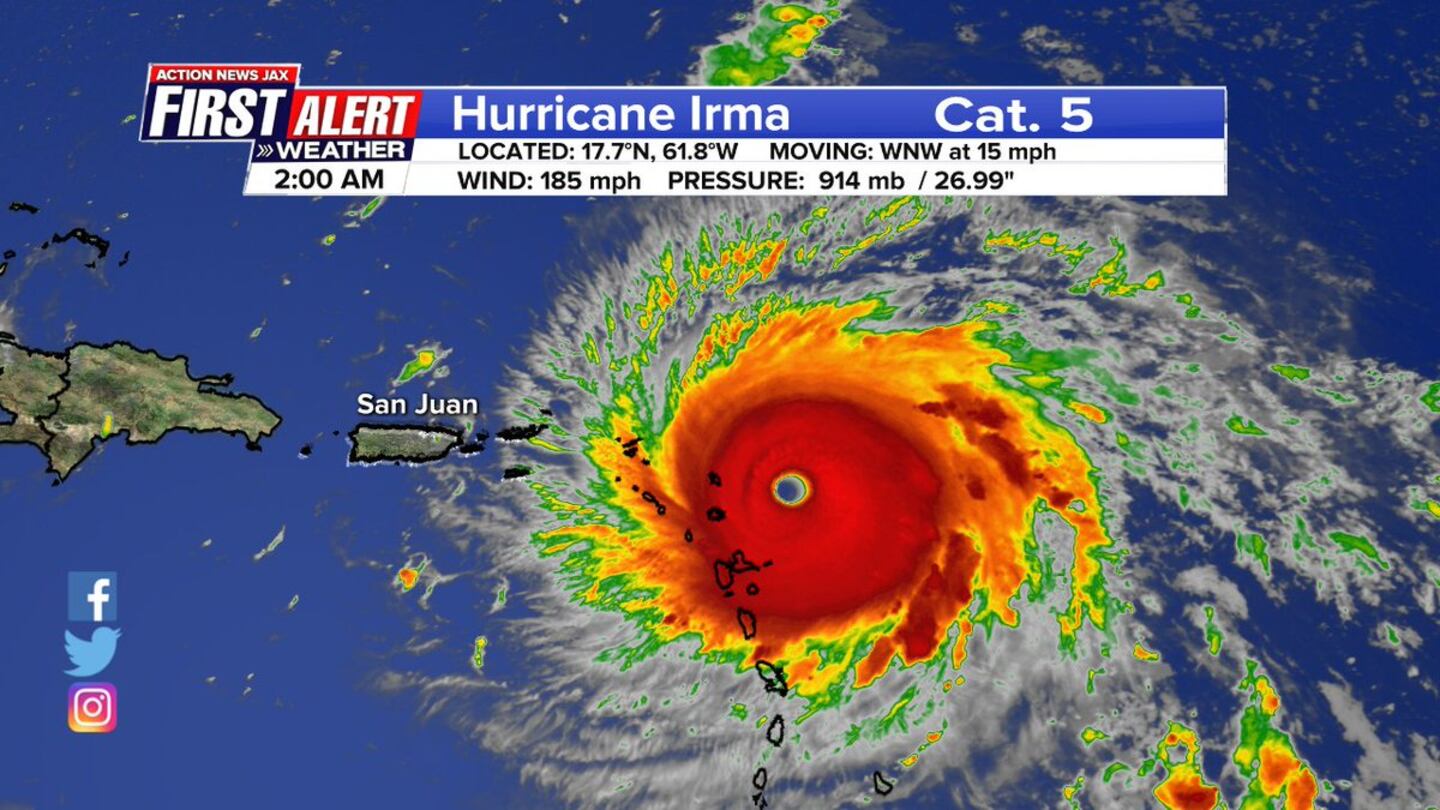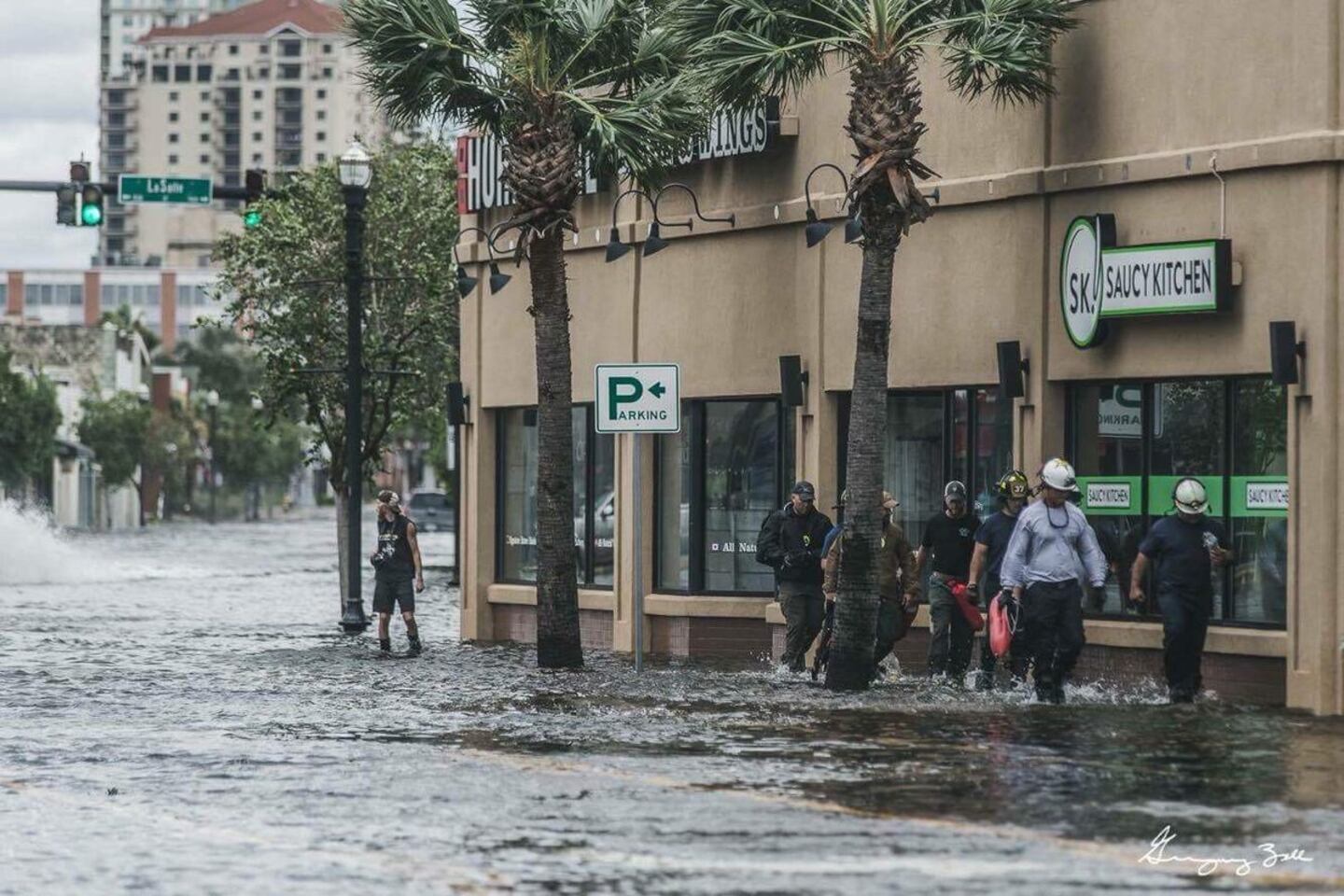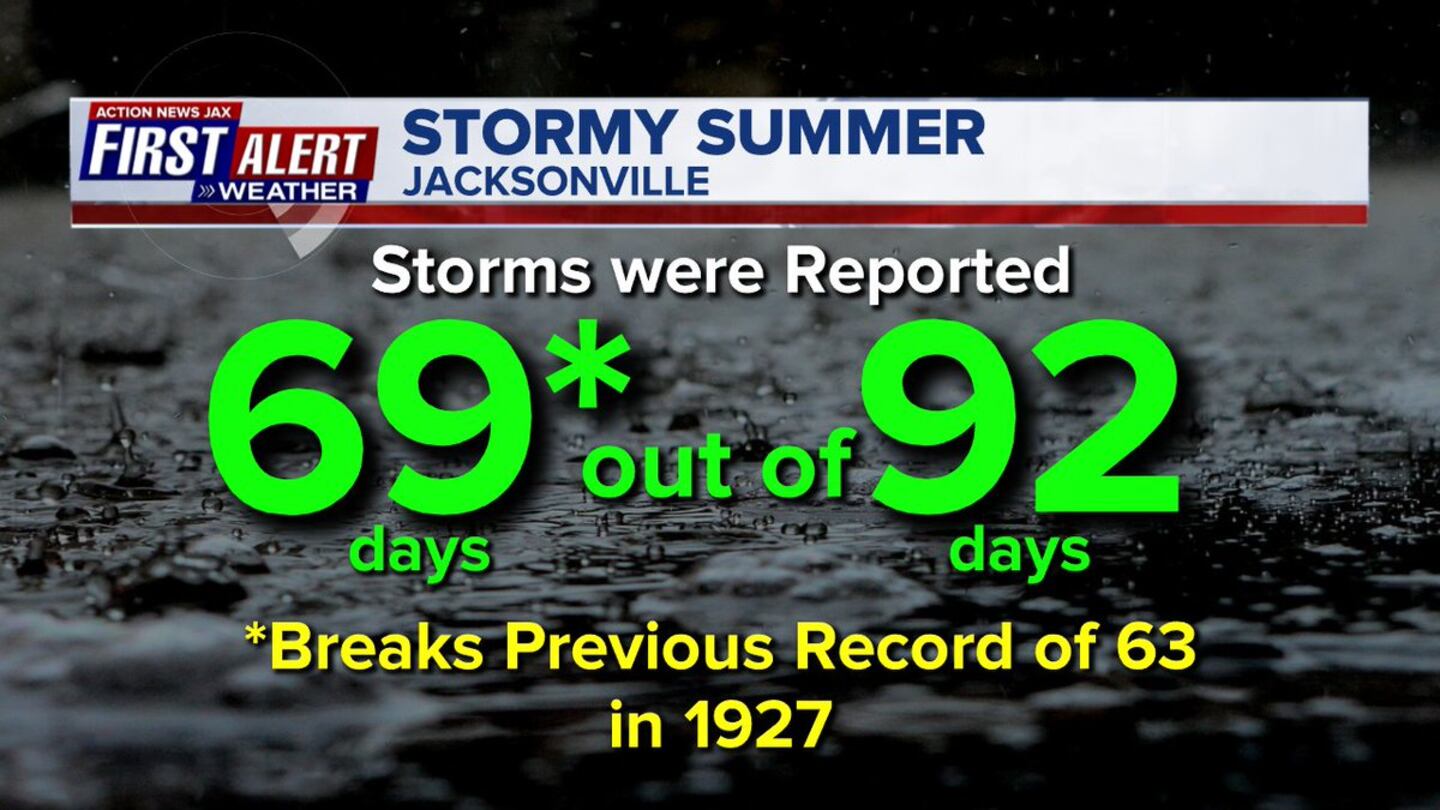Sept. 6, 2018 — A busy period in the tropics through at least mid September. Read the latest - "Talking the Tropics With Mike" - updated every day through the hurricane season.
Speaking of the tropics.... mighty hurricane Irma was churning through the Atlantic & Caribbean one year ago! The devastating storm will go down as one of the most intense & damage in history (Caribbean/Cuba/U.S.).... up to this point. Irma made its closest approach to Jacksonville on Sept. 11th. Read my summary * here *.
So in keeping with the spirit of the peak of the hurricane season.... September is "National Preparedness Month". The First Alert Weather Team will take the First Alert Storm Tracker to Costco at the St. Johns Town Center Wed., Sept. 19th to inform shoppers about to be weather aware & how to keep you & your family safe.
From NEEF (National Environmental Education Foundation):
Extreme weather can occur anywhere, at any time. September is National Preparedness Month, a reminder that everyone needs to prepare for the natural disasters and emergencies that impact us where we live, work, and play.
In 2017, extreme weather and climate events claimed thousands of lives across the United States, and 16 of these events caused damages that each led more than $1 billion in losses—with a total price tag of more than $300 billion. Drought, hail, flooding, tornadoes, and severe storms each rocked the nation, but the standouts were the hurricanes and wildfire. In August and September, hurricanes Harvey, Irma, and Maria each left paths of devastation, and in October the California firestorms were record-setting in their destruction. While the events of 2017 were historic in their impact, and the country continues to rebuild in their wake, it's important to remember that a weather event doesn't have to break records to pose a threat to you or your family.
Luckily, there are things you can do right now to help prepare your family, friends, and community for whatever Mother Nature has in store.
Make a Plan
If a disaster strikes, how will you get in touch with members of your household? Where will you go if you need to leave your home? Do you have the supplies and information you need? Don’t be caught off-guard: make a plan and make sure every member of your household knows what to do in an emergency. These tips and tools will get you started:
- Create an emergency communication plan so that everyone has the information they need to get in touch.
- Plan for your risks. Get the facts on disasters where you live and know what you will do if you need to evacuate.
- Build an emergency supply kit. Collect basic items you may need in an emergency.
- Tailor your plan. Kids, older adults, pets, people with disabilities, and people with health conditions may need special assistance or supplies during a disaster.
Lend a Hand
How can you help your community prepare and respond to natural disasters and other emergencies?
- Participate in National PrepareAThon! Day on September 15 and join millions of Americans taking action to prepare.
- Volunteer. Many community organizations offer free education and training for volunteers. Learn more about opportunities with Certified Emergency Response Teams, American Red Cross, Medical Reserve Corps, and others.
Sources:
- Chappell, Bill. 2017. "Category 5 Hurricane Irma Brings 175-MPH Winds To Bear on Caribbean Islands." NPR, September 5.
- Lamothe, Dan, Jessica Contrera, and Sarah Larimer. 2017. "Texas Continues Harvey Recovery Efforts as Hurricane Irma Looms in the Atlantic." Washington Post, September 5.
- Mejia, Brittny. 2017. "Weather Delivers Blow to La Tuna Fire's Spread: 'Mother Nature Kicked In.'" Los Angeles Times, September 4.
- National Hurricane Center. 2017. "Hurricane Irma Public Advisory." NOAA, September 5.
- Smith, Adam B. 2018. "2017 US billion-dollar weather and climate disasters: a historic year in context." Climate.gov. Accessed September 4.
We're coming off a very stormy summer (June/July/Aug.), & the stats - provided by the Jax N.W.S. - prove it. 69 out of 92 - or about 75% - of the summer days had t'storms officially at JIA. Some places had even more days with thunder/lightning. The avg. is 47 days. Rainfall between 25 & 30" "only" ranked the summer as the 16th wettest on record... & not as wet as last summer(!).
September / early Oct. night skies:
skyandtelescope.com for more information.
Sept. 5 & 6 (dawn): Mercury poses in the east 1½° above Regulus in Leo before the Sun rises. Binoculars help.
Sept. 13 (dusk): The waxing crescent Moon, Jupiter, and star Zubenelgenubi (zoo-ben-el-geh-NEW-bee, or Alpha Librae) form an almost perfect equilateral triangle with sides some 4° long.
Sept. 15 (evening): The nearly first-quarter Moon is 8° above Antares and flanked by Jupiter and Saturn.
Sept. 16 (evening): The first-quarter Moon is 8° to the right of the ringed planet Saturn
Sept. 17 (evening): The Moon has leapfrogged over Saturn and now poses 4½° to its left.
Sept. 19 (evening): A fattening Moon hovers some 4° above Mars. They set together in the west-southwest.
Sept. 22: Autumnal equinox, 9:54 p.m. EDT. The Sun rises due east and sets due west everywhere.
Sept. 30 (night): Waxing gibbous Moon rises in the late evening, soon followed by Aldebaran. Later they are 1° apart.
Oct. 4 (morning): A thin waning crescent Moon and the Beehive star cluster rise together well before sunrise.
Oct. 11 (dusk): Jupiter gleams in the southwest with a very thin crescent Moon just 3° above it.
Moon Phases Last Quarter: Sept. 2, 10:37 p.m. EDT New Moon: Sept. 9, 2:01 p.m. EDT First Quarter: Sept. 16, 7:15 p.m. EDT Full Moon: Sept. 24, 10:52 p.m. EDT (Harvest Moon) |
Cox Media Group











